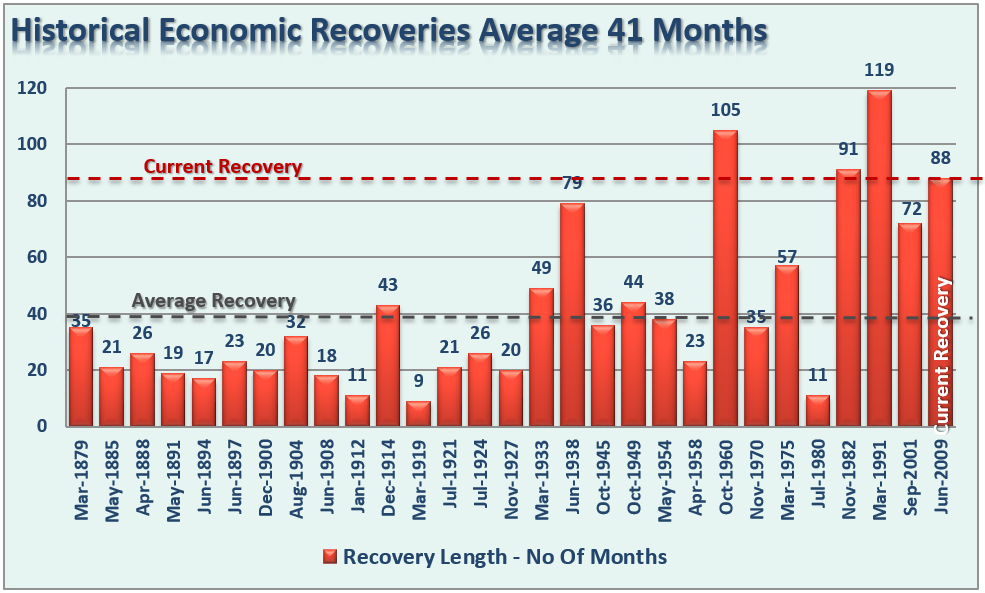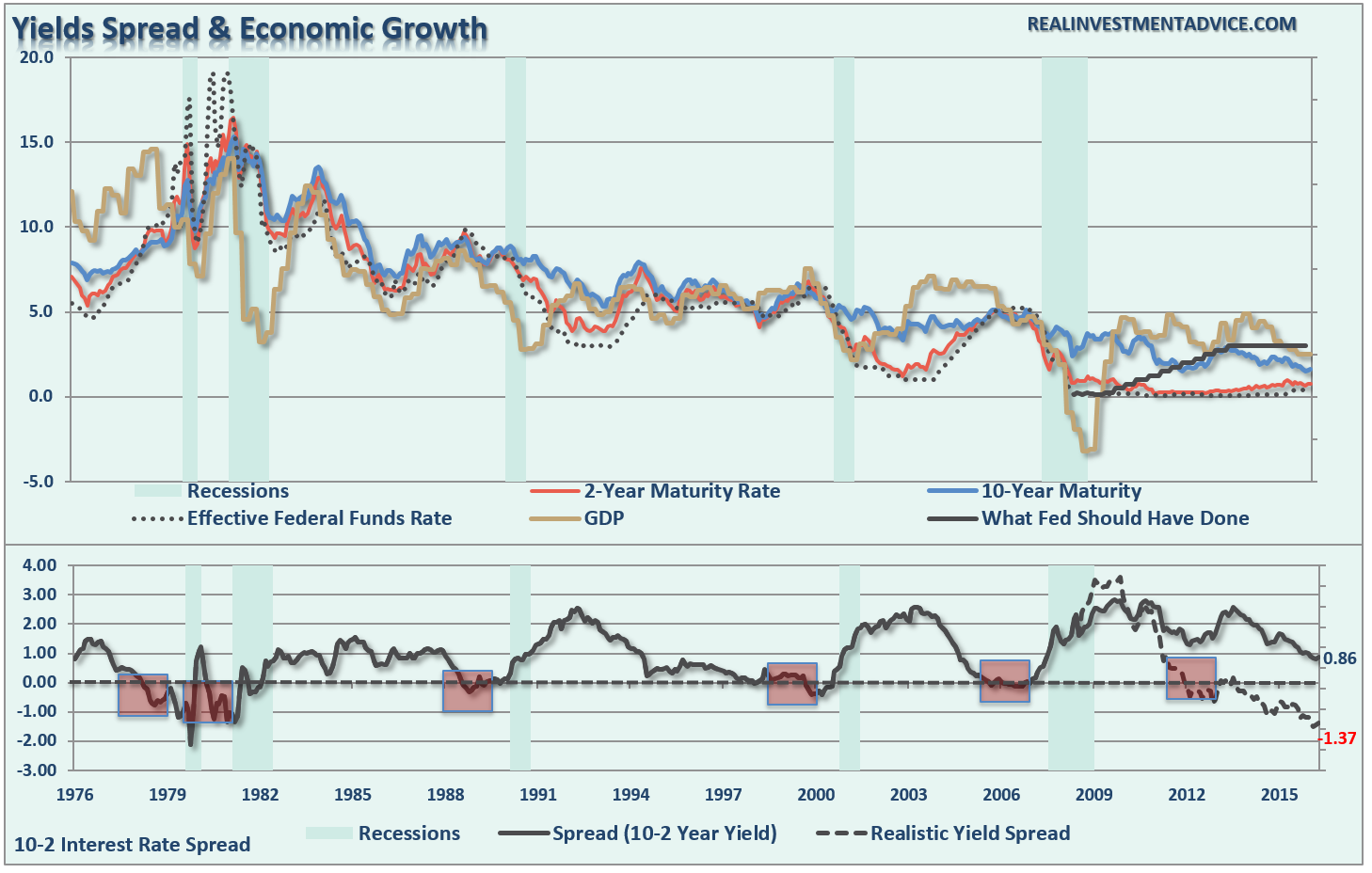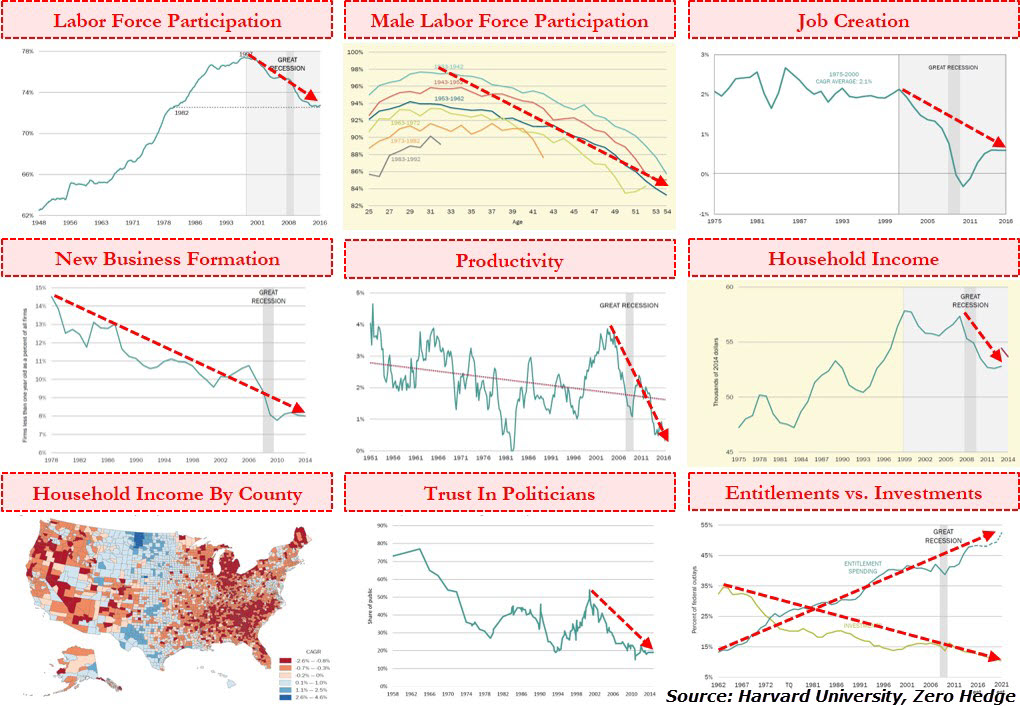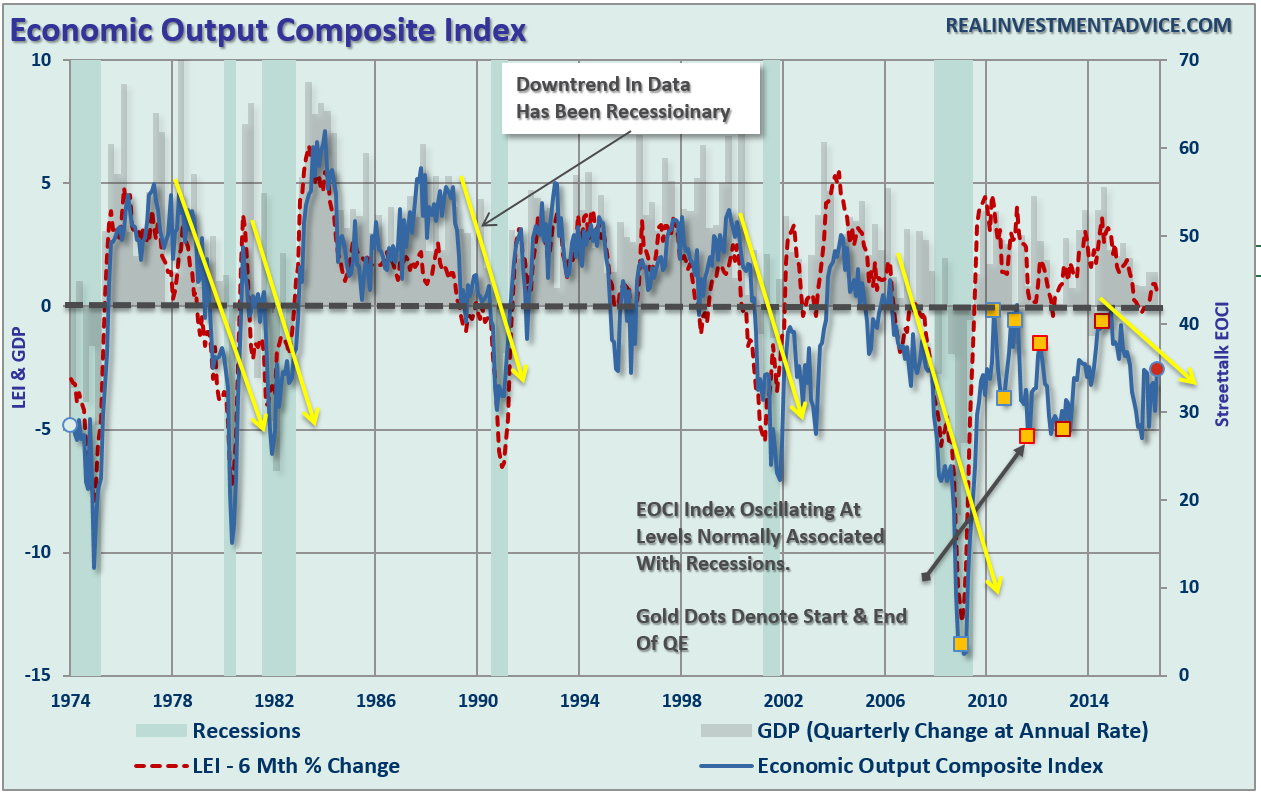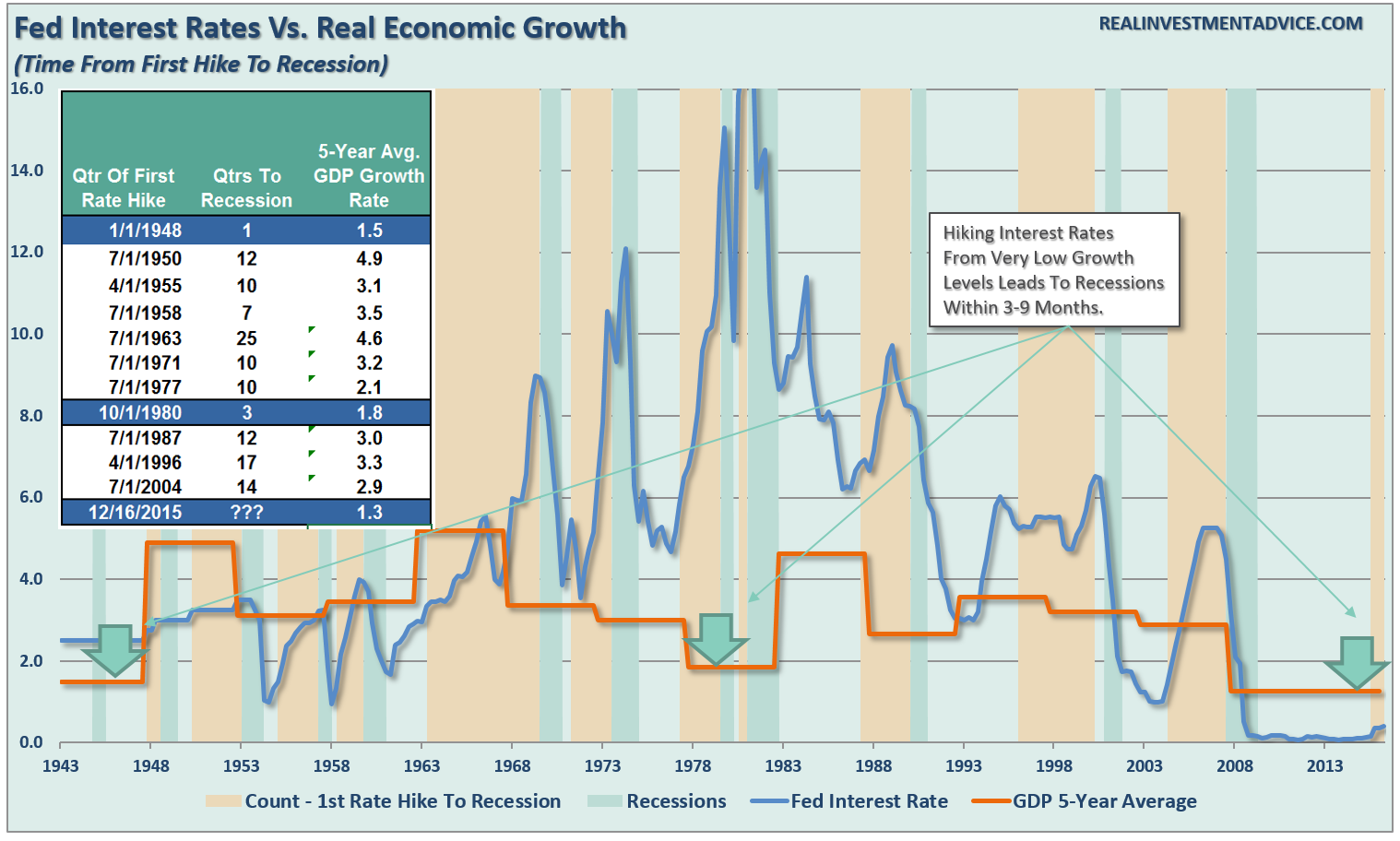Submitted by Lance Roberts via RealInvestmentAdvice.com,
GDP – The Problem
Paul Wallace recently penned for Reuters an interesting article entitled: “GDP Is A Grossly Defective Product.” In the article he states:
“Yet despite its theoretical appeal, GDP is, in practice, a fallible measure – and increasingly becoming one that could be described as a grossly defective product.
For one thing, the number shifts as more complete, up-to-date data becomes available. For another, national accountants change their definitions and approaches to better reflect the changing shape of the economy, such as the recent inclusion of research and development as investment.“
He is absolutely correct.
Now, for all of you playing the home version of “Nail That GDP Number,” it was in 2013 the BEA decided that the economy was not growing fast enough and “tweaked” the GDP calculation and added in “intellectual property.” Those adjustments boosted GDP by some $500 million.
There are inherent problems when you begin to adjust the “math” to “goal seek” a specific outcome. For example, the problem with adding “intellectual property” is that the cost of a new cancer drug treatment, a Hollywood movie or a new hit song is already included in the value of product brought to market. In other words, since production is what drives economic growth, that value is captured in the quarterly analysis of business investment, spending, etc. Furthermore, how does the BEA value “intellectual property” accurately and fairly across all industries and products? Some products like a cancer treatment have a much different “value” than a song.
However, since those tweaks did not boost the economic growth rate as much as was hoped, the BEA went further in 2015 to adjust the calculation once again. To wit:
“Nicole Mayerhauser, chief of BEA’s national income and wealth division, which oversees the GDP report, said in the statement that the agency has identified several sources of trouble in the data, including federal defense service spending.
Mayerhauser said initial research has shown this category of spending to be generally lower in the first and the fourth quarters. The BEA will also be adjusting “certain inventory investment series” that have not previously been seasonally adjusted. In addition, the agency will provide more intensive seasonal adjustment quarterly service spending data.“
I am not a conspiracy theorist by any stretch. However, something strikes me as very odd about the frequency of adjusting the calculation to obtain better outcomes.
The Federal Reserve understands, as we push into the eighth year of the current economic expansion, that we are likely closer to the next recession than not. The problem is the Fed has remained stuck at the zero bound for interest rates for far too long.
While QE programs have NOT been effective at creating organic economic growth, they were effective at boosting asset prices and providing an illusory wealth effect. This would have provided cover for the Federal Reserve to raise interest rates off of the zero bound giving them access to a more effective monetary policy tool in the future. The chart below shows the trajectory of rate increases the Fed should have undertaken given the support the expansion of their balance sheet would have provided.
Of course, the offset of using the liquidity push to raise rates and normalization of monetary policy early on would have limited asset price inflation to about one-half of its previous advance. Certainly not nearly as much fun for Wall Street.
But alas, the Fed failed to use the recalculated and adjusted economic numbers, massive liquidity flows and rising asset prices to reload their policy tools. After two years of promises to hike rates in the face of stronger economic growth, each attempt has been consistently met with “weaker than expected” economic data.
As we approach the end of the year, the Fed is once again determined to raise interest rates. However, is economic growth strengthening enough to support the hike? We can look at some alternative measures of the economy to answer that question.
Alternative Measures Of Economic Growth
While the BEA is suggesting that it is simply “residual adjustments” lingering in the inventory and production-related data, that does not really explain the economic weakness in other areas of the economy.
The chart collection below is from a recent Harvard study entitled “Problems Unsolved and a Nation Divided” which came to a couple of key conclusions (via ZeroHedge)
“America’s economic performance peaked in the late 1990s, and erosion in crucial economic indicators such as the rate of economic growth, productivity growth, job growth, and investment began well before the Great Recession.
Workforce participation, the proportion of Americans in the productive workforce, peaked in 1997. With fewer working-age men and women in the workforce, per-capita income for the U.S. is reduced.
Median real household income has declined since 1999, with incomes stagnating across virtually all income levels. Despite a welcome jump in 2015, median household income remains below the peak attained in 1999, 17 years ago. Moreover, stagnating income and limited job prospects have disproportionately affected lower-income and lower-skilled Americans, leading inequality to rise.
Pessimism about the trajectory of U.S. competitiveness deepened in 2016, for the first time since we started surveying alumni in 2011. Fifty percent of the business leaders surveyed expect U.S. competitiveness to decline in the coming three years, while 30% foresee improvement and 20% no change.
The U.S. lacks an economic strategy, especially at the federal level. The implicit strategy has been to trust the Federal Reserve to solve our problems through monetary policy.”
However, most importantly, the following chart is the best overall indicator of economic activity in the domestic economy. The Economic Output Composite Index (EOCI) is a compilation of broad economic inputs from manufacturing to small business to leading economic indicators. (read more on construction here)
Importantly, all of these indicators confirm that economic weakness is pervasive across a broad swath of the economy, and weakness in GDP growth in Q1 was likely more than just a “statistical anomaly.”
Furthermore, despite the recent bounce in some of the economic data, it is important to note the entire complex of indicators still operate at levels more normally associated with weak economic environments versus expansionary ones.
But it is here, as suggested above, that the Federal Reserve finds itself trapped. The Federal Reserve needs stronger economic growth to justify raising interest rates. After all, the reason the Fed tightens monetary policy to is SLOW economic growth to mitigate the potential of surging inflationary pressures. The problem currently, is that the Fed is discussing raising interest rates into an environment of low growth and inflation.
So, what has happened historically when the Fed has raised interest rates in such an environment?
Interest Rates Versus Economic Growth
Currently, employment and wage growth is extremely weak, 1-in-4 Americans are on Government subsidies, and the majority of American’s are living paycheck-to-paycheck. This is why Central Banks, globally, are aggressively monetizing debt to keep growth from stalling out. However, currently, many analysts and economist have increased the odds of the Fed hiking rates in December. The belief is that economic growth can continue to accelerate despite tighter monetary policy.
The problem is most of the analysis overlooks the level of economic growth at the beginning of interest rate hikes. The Federal Reserve uses monetary policy tools to slow economic growth and ease inflationary pressures by tightening monetary supply. For the last eight years, the Federal Reserve has flooded the financial system to boost asset prices in hopes of spurring economic growth and inflation.
As stated, outside of inflated asset prices, there is little evidence of real economic growth as witnessed by an average annual GDP growth rate of just 1.3% since 2008, which is the lowest in history….ever. The chart and table below compares real, inflation-adjusted, GDP to Federal Reserve interest rate levels. The gold vertical bars denote the quarter of the first rate hike to the beginning of the next rate decrease or onset of a recession.
If I look at the underlying data, which dates back to 1943, and calculate both the average and median for the entire span, I find:
- The average number of quarters from the first rate hike to the next recession is 11, or 33 months.
- The average 5-year real economic growth rate was 3.08%
- The median number of quarters from the first rate hike to the next recession is 10, or 30 months.
- The median 5-year real economic growth rate was 3.10%
However, note the GREEN arrows. There have only been TWO previous points in history where real economic growth was below 2% at the time of the first quarterly rate hike – 1948 and 1980. In 1948, the recession occurred ONE-quarter later and THREE-quarters following the first hike in 1980.The importance of this reflects the point made previously, the Federal Reserve lifts interest rates to slow economic growth and quell inflationary pressures. There is currently little evidence of inflationary pressures outside of financial asset prices and spiraling rent and health care costs. Therefore, rather than lifting rates when average real economic growth was at 3%, the Fed is now considering further rates hikes with growth at less than half that rate.
Think about it this way. If it has historically taken 11 quarters to fall from an economic growth rate of 3% into recession, then it will take just 1/3rd of that time at a rate of 1%, or 3-4 quarters. This is historically consistent with previous economic cycles, as shown in the table to the left. This suggests there is much less wiggle room between the first rate hike, and the next recession, than currently believed.
But then again, if you can just keep changing the data calculation to goal seek a better economic picture, then surely that is enough. Right? Might want to ask those 100 million on government welfare what they think.
Just some things I am thinking about.
The post GDP – A Grossly Defective Product appeared first on crude-oil.top.
